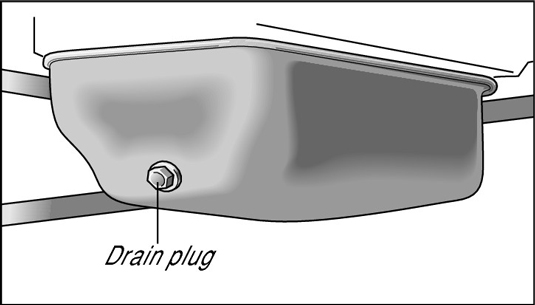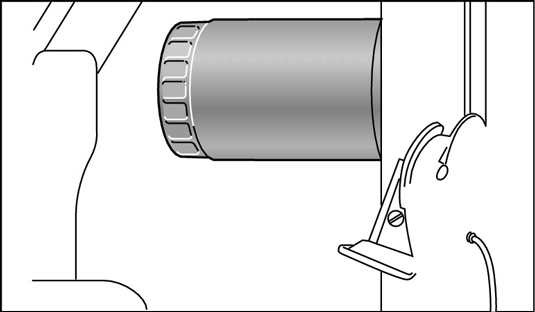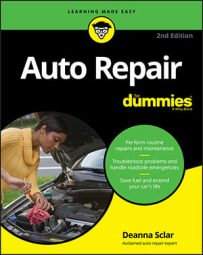Changing oil is usually easy. Unless it’s impossible to reach your oil filter and/or oil drain plug, it’s cheaper to change the oil yourself. All you have to do is unscrew a plug and a filter, let the oil drain out, replace the filter and plug, and pour in some new oil.
Before you begin work, be sure your gearshift is in Park or Neutral with the parking brake on, and set out all your tools and equipment.
Follow these easy steps to change your oil and oil filter:Either park on level ground or in such a way that the oil drain plug is at the lower end of the oil pan.
You can jack up the vehicle so that the oil drain plug is at the lower end of the oil pan.
Warm up your engine for two or three minutes.
You don’t want the engine so hot that you burn yourself. When it’s slightly warm, shut off the engine.
Look under your car and find the large nut or plug located under the oil pan at the bottom of the engine.
It unscrews with the aid of an adjustable wrench. If the plug is too hot to touch comfortably, let the engine cool off for a while longer.
Push a basin lined with a plastic bag under the oil drain plug.
The oil may come out sideways from the direction the drain plug is facing. Allow room for that when you place the drain pan.
Unscrew the oil drain plug until it’s almost ready to come out.

Use an adjustable wrench for this step. Be sure protect your hand with a dirty rag or a disposable plastic glove, and give the plug a last quick turn by hand to release it. Pull your hand away quickly so that you don’t get oil all over yourself. The oil should drain out of your engine into the container.
Remove the cap from the oil filler hole at the top of your engine.
This large cap lifts or screws right off, revealing a largish hole.
Unscrew the oil filter using an oil filter wrench if you can’t do it by hand.

The oil filter looks like a tin can that’s screwed onto the engine. The oil filter unscrews if you twist it counterclockwise. It’ll have oil in it, so be careful not to dump it on anything when you remove it. If any remnants of the rubber seal from the old filter remain on your engine, scrape them off carefully, making sure they don’t fall into the hole.
Empty the oil from the filter into the drain pan.
Use a screwdriver to punch a hole in the dome of the can and invert it in the drain pan to allow the oil to flow out. When the filter has drained completely (this can take as long as 12 hours), wrap it in newspaper and set it aside to take to a recycling center with your old oil.
Open a new bottle of oil.
Consult your owner’s manual for the right grade and viscosity of your motor oil.
Dip a finger in the new oil and moisten the gasket on the top of the new oil filter. Then screw the new filter into the engine where the old one was.
Follow directions on the filter, or turn it gently until it settles into place, and then turn it another three-quarter turn. Unless the filter manufacturer specifically recommends it or there isn’t enough space to get your hand into the area, don’t use an oil filter wrench to tighten the filter. It should fit tightly, but you don’t want to crush the gasket or the filter will leak.
Wipe around the place where the oil drain plug goes and replace the oil drain plug.
Use an adjustable wrench to tighten it.
If your vehicle uses an oil drain plug gasket, make sure that the old one has been removed, and lay a new gasket on the pan before you replace the plug.
Pour all but one quart of fresh oil into the oil filler hole.
This means that if your car holds five quarts of oil, pour in only four quarts. A funnel will help you get the oil in without spilling it.
Replace the oil filler cap.
Run the engine for 30 to 60 seconds while you check for leaks from the oil drain plug and around the filter.
The oil pressure light on your dashboard should go out in 10 or 15 seconds (or if your vehicle has an oil pressure gauge, the needle should move off of “Low”). Don’t rev up your engine during this period. Your oil pressure ranges from zero to low while the light is on and won’t reach the proper pressure until your oil filter fills up. If the light doesn’t go out, check under the vehicle and around the engine for leaks. Running the engine circulates oil into the new oil filter, and because filters hold from a half to a full quart of oil, you want to be sure that your filter is full to get an accurate reading on the oil dipstick.
Shut off the engine and wait five to ten minutes.
You’re letting the oil settle into the oil pan.
Use the dipstick to bring your oil up to the correct level.
Remove the oil dipstick, wipe it with a clean, lint-free rag, and shove it back in. Pull it out again and check it. Keep adding oil a little at a time and checking the stick until you reach the “Full” line on the dipstick.
Remove the drain pan from under the vehicle.
Drive around the block a couple of times, let the oil settle down again, and recheck the dipstick and the dashboard indicator.

